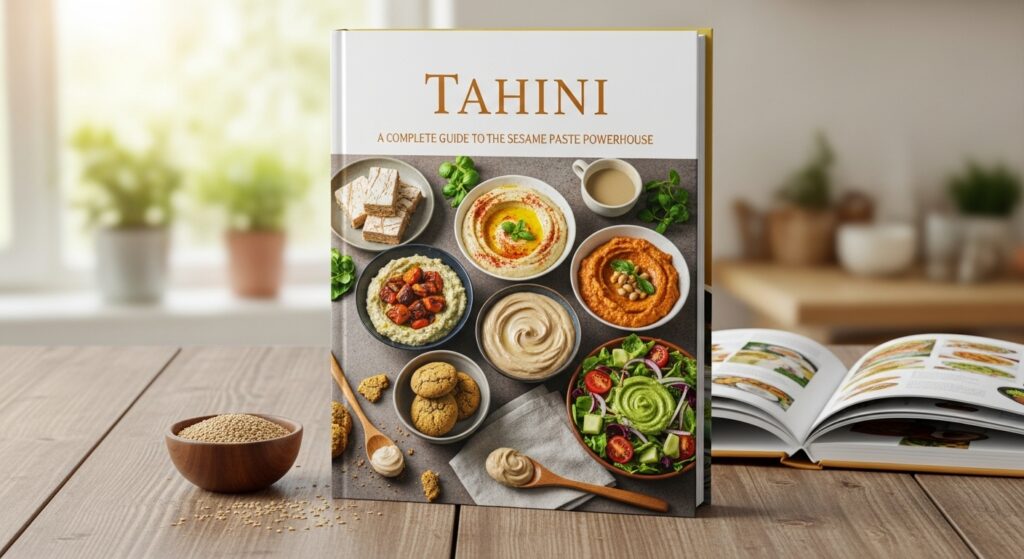In 2025, the world of healthy eating continues to evolve, yet one ancient ingredient remains firmly at the center of it all — Tahhiini. This creamy sesame paste has become more than just a condiment; it’s a symbol of nutrition, tradition, and modern culinary innovation.
Whether you’ve seen it in a jar on supermarket shelves or drizzled over a bowl of hummus, Tahhiini holds an important place in cuisines around the globe. In this complete guide, we’ll explore its origins, health benefits, uses, and why this humble ingredient is capturing renewed attention today.
What Is Tahhiini?
Tahhiini is a thick, smooth paste made from ground sesame seeds. It has a nutty flavor, a silky texture, and a rich aroma that enhances both sweet and savory dishes.
The name “Tahhiini” (often spelled tahini) comes from the Arabic word meaning “to grind.” It perfectly describes the simple yet elegant process behind its creation: grinding roasted or raw sesame seeds until they release their natural oils and form a creamy paste.
Unlike peanut butter or almond spread, Tahhiini is lighter in texture but deeper in flavor. It’s naturally vegan, gluten-free, and full of essential nutrients — making it one of the most versatile superfoods in modern diets.
The Origins of Tahhiini
The history of Tahhiini stretches back thousands of years. Ancient civilizations in the Middle East and North Africa used sesame seeds not only for their oil but also as a nutritious food source. The transformation of these seeds into a paste was a natural evolution — offering both long shelf life and concentrated nourishment.
Over time, Ta-hhiini became a central element of Middle Eastern and Mediterranean cuisine, appearing in dishes like hummus, baba ganoush, and halva. Today, it’s found in kitchens worldwide, valued for its health benefits and culinary adaptability.
How Tahhiini Is Made
The process of making Tahhiini is simple yet delicate. The best versions maintain the balance between smoothness, aroma, and natural oil content.
Here’s how it’s typically made:
-
Cleaning: Sesame seeds are cleaned to remove impurities.
-
Hulling (optional): The outer shell is removed for a lighter flavor; unhulled seeds create a darker, more robust paste.
-
Roasting: Seeds are lightly roasted to enhance aroma and flavor.
-
Grinding: The roasted seeds are ground into a smooth paste, releasing their natural oils.
-
Packaging: Once the texture is creamy and uniform, the Tahhiini is ready for use.
This simple process preserves the full nutritional power of sesame while unlocking its rich, toasty flavor.
Nutritional Profile of Tahhiini
Ta-hhiini is far more than just a condiment — it’s a nutrient-dense powerhouse. Every spoonful delivers essential vitamins, minerals, and healthy fats.
Key Nutrients in Tahhiini:
-
Healthy Fats: High in monounsaturated and polyunsaturated fats, which support heart health.
-
Protein: A valuable source of plant-based protein, ideal for vegetarian and vegan diets.
-
Calcium and Magnesium: Important minerals for bone strength and muscle function.
-
Iron and Zinc: Help with immunity and energy production.
-
Fiber: Supports digestion and helps maintain healthy cholesterol levels.
-
Antioxidants: Compounds that reduce inflammation and protect against oxidative stress.
Health Benefits of Tahhiini
The rich nutritional content of Ta-hhiini offers several scientifically backed health advantages:
1. Promotes Heart Health
The good fats in Ta-hhiini — especially omega-6 and omega-9 fatty acids — help regulate cholesterol levels and reduce the risk of heart disease.
2. Boosts Bone Strength
Packed with calcium, phosphorus, and magnesium, Ta-hhiini supports bone density and strength — a great option for those avoiding dairy.
3. Aids in Digestion
Unhulled Tahhiini contains natural fiber that supports digestive health and promotes balanced gut bacteria.
4. Provides Plant-Based Protein
Tahhiini serves as a valuable protein source for vegans and vegetarians, providing essential amino acids that help repair tissues and build muscle.
5. Supports Skin and Hair Health
The zinc and vitamin E in Tahhiini nourish the skin, improve elasticity, and strengthen hair.
6. Balances Energy Levels
Because it combines healthy fats, protein, and slow-digesting carbohydrates, Tahhiini provides long-lasting energy without sugar spikes.
Culinary Uses of Tahhiini
Tahhiini is one of the most versatile ingredients in modern cuisine. Its rich, nutty flavor complements countless dishes — from savory spreads to sweet desserts.
Here are some popular and creative ways to use it:
1. Classic Hummus
Blend Ta-hhiini with chickpeas, olive oil, lemon juice, and garlic for the ultimate creamy dip.
2. Tahhiini Sauce
Whisk Ta-hhiini with lemon juice, garlic, and water for a tangy dressing that’s perfect for salads, falafel, or grilled vegetables.
3. Smoothies
Add a spoonful to smoothies for extra creaminess and a boost of protein and healthy fats.
4. Baking
Use Tahhiini in cookies, brownies, or muffins for a subtle nutty undertone and moist texture.
5. Breakfast Spread
Spread Tahhiini on toast with honey or banana slices for a nutritious, energizing breakfast.
6. Desserts
Drizzle over ice cream or blend into halva, a traditional sweet confection made with sugar or honey.
How to Store Tahhiini
Proper storage keeps your Tahhiini fresh and flavorful.
-
Before opening: Store in a cool, dry place away from sunlight.
-
After opening: Refrigerate to extend shelf life and prevent the natural oils from turning rancid.
-
Before use: Stir well, as natural separation of oil and paste is completely normal.
With proper care, a jar of Tahhiini can last for months while retaining its rich flavor and texture.
Tips for Choosing Quality Tahhiini
When buying Tahhiini, look for:
-
100% Sesame Seeds: Pure Ta-hhiini should not contain unnecessary additives or sweeteners.
-
Smooth Consistency: The texture should be creamy, not gritty or overly thick.
-
Fresh Aroma: Good Ta-hhiini smells nutty and slightly roasted, never bitter.
-
Color: Hulled versions are pale and mild, while unhulled Ta-hhiini is darker with stronger flavor.
Choosing high-quality Ta-hhiini ensures better taste, texture, and nutritional value.
The Modern Rise of Tahhiini in 2025
In recent years, Tahhiini has gained a global following among health-conscious eaters, chefs, and food innovators. Its versatility and nutrient profile make it a favorite in vegan cuisine, plant-based recipes, and fusion dining.
From smoothie bowls to salad dressings, restaurants and home cooks alike are embracing Tahhiini’s natural simplicity. It has become a symbol of modern wellness — ancient roots meeting contemporary taste.
Conclusion
Tahhiini is more than just a food — it’s a cultural legacy carried into the modern kitchen. From ancient Middle Eastern markets to global health food shelves, this sesame-based paste has proven timeless, nourishing, and endlessly adaptable.
Whether you’re spreading it on toast, mixing it into sauces, or whisking it into desserts, Tahhiini offers a perfect blend of flavor, nutrition, and tradition.
In 2025 and beyond, it stands not only as a culinary essential but as a bridge between ancient wisdom and modern living — smooth, strong, and beautifully simple.






